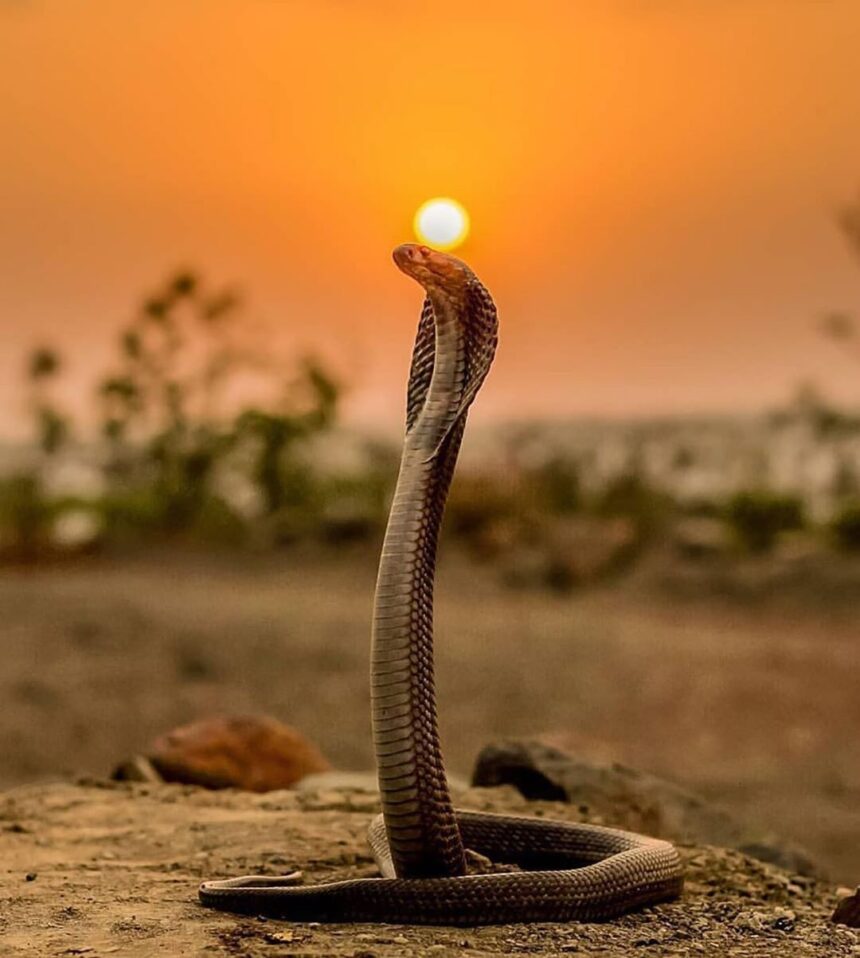Indian Snakes – The Fascinating and Fearsome Reptiles of the Subcontinent
India is home to one of the richest snake diversities in the world. From the venomous King Cobra to the harmless rat snakes, these reptiles are both feared and revered in Indian culture. Snakes have been part of India’s mythology, religion, and rural life for centuries, yet they are also essential to the country’s ecological balance.
- Indian Snakes – The Fascinating and Fearsome Reptiles of the Subcontinent
- 1. History and Cultural Significance
- 2. Snake Diversity in India
- The “Big Four” Venomous Snakes of India (responsible for most snakebite deaths):
- Other Important Venomous Snakes:
- Non-Venomous Snakes:
- 3. Key Facts About Indian Snakes
- 4. Myths vs. Reality
- 5. Safety and First Aid for Snakebites
- 6. Role in Ecosystem
- 7. Indian Laws Protecting Snakes
- 8. Wishing & Respect for Snakes
- 9. Importance in Our Life and Society
- Conclusion – Coexistence with the Serpents
1. History and Cultural Significance
Snakes are deeply woven into the cultural and spiritual fabric of India.
Mythology: Lord Shiva is depicted with a cobra (Vasuki) around his neck, symbolizing power and fearlessness. Lord Vishnu rests on the cosmic serpent Sheshnag.
Festivals: Nag Panchami is celebrated to honor snakes, seeking their blessings and protection from snakebites.
Ancient Texts: References to snakes appear in the Mahabharata, Ramayana, and Vedic literature, where they are often guardians of treasures and gateways to the underworld (Patal Lok).
2. Snake Diversity in India
India hosts over 300 snake species, of which about 60 are venomous. Some notable ones are:
The “Big Four” Venomous Snakes of India (responsible for most snakebite deaths):
Spectacled Cobra (Naja naja) – Famous for its hood and religious symbolism.
Russell’s Viper (Daboia russelii) – Highly venomous, aggressive when provoked.
Common Krait (Bungarus caeruleus) – Nocturnal, extremely venomous.
Saw-Scaled Viper (Echis carinatus) – Small but dangerous, produces a ‘sizzling’ sound by rubbing its scales.
Other Important Venomous Snakes:
King Cobra (Ophiophagus hannah) – The world’s longest venomous snake.
Banded Krait (Bungarus fasciatus) – Beautifully patterned, deadly bite.
Non-Venomous Snakes:
Indian Rat Snake (Ptyas mucosa) – Harmless and fast.
Indian Rock Python (Python molurus) – Huge constrictor.
Green Vine Snake (Ahaetulla nasuta) – Thin, tree-dwelling.
3. Key Facts About Indian Snakes
Snakes are cold-blooded reptiles that shed their skin periodically.
They help control rodent populations, preventing crop damage and disease spread.
Despite the fear, most snakes in India are non-venomous.
Snakebites in rural areas cause over 50,000 deaths annually due to lack of awareness and medical facilities.
4. Myths vs. Reality
| Myth | Reality |
|---|---|
| Snakes drink milk. | Snakes don’t drink milk naturally; they drink water. |
| All snakes are venomous. | Most Indian snakes are harmless. |
| Snakes chase humans. | Snakes avoid humans and attack only in self-defense. |
5. Safety and First Aid for Snakebites
Stay calm and avoid sudden movements.
Immobilize the bitten limb.
Do not try to suck the venom or cut the wound.
Get to a hospital immediately for anti-venom treatment.
6. Role in Ecosystem
Snakes are natural pest controllers, keeping rodent and insect populations in check.
They are food for birds of prey, mongooses, and larger mammals.
Their disappearance can cause ecological imbalance.
7. Indian Laws Protecting Snakes
Under the Wildlife Protection Act, 1972, many snake species (including cobras, pythons, and vipers) are protected, and hunting or capturing them is illegal without permission.
8. Wishing & Respect for Snakes
On Nag Panchami, devotees offer milk, flowers, and prayers to snakes, symbolizing respect for nature’s creatures and the wish for protection from danger.
9. Importance in Our Life and Society
Agriculture: Farmers benefit from snakes controlling pests naturally.
Medicine: Snake venom is used in research and development of anti-venoms and medicines.
Culture: Snakes symbolize fertility, rebirth, and transformation in Indian traditions.
Conclusion – Coexistence with the Serpents
Snakes are not just dangerous reptiles; they are guardians of ecological balance, symbols of spiritual power, and vital parts of India’s natural heritage. Understanding them, respecting their role, and ensuring their conservation will help maintain harmony between humans and wildlife.








